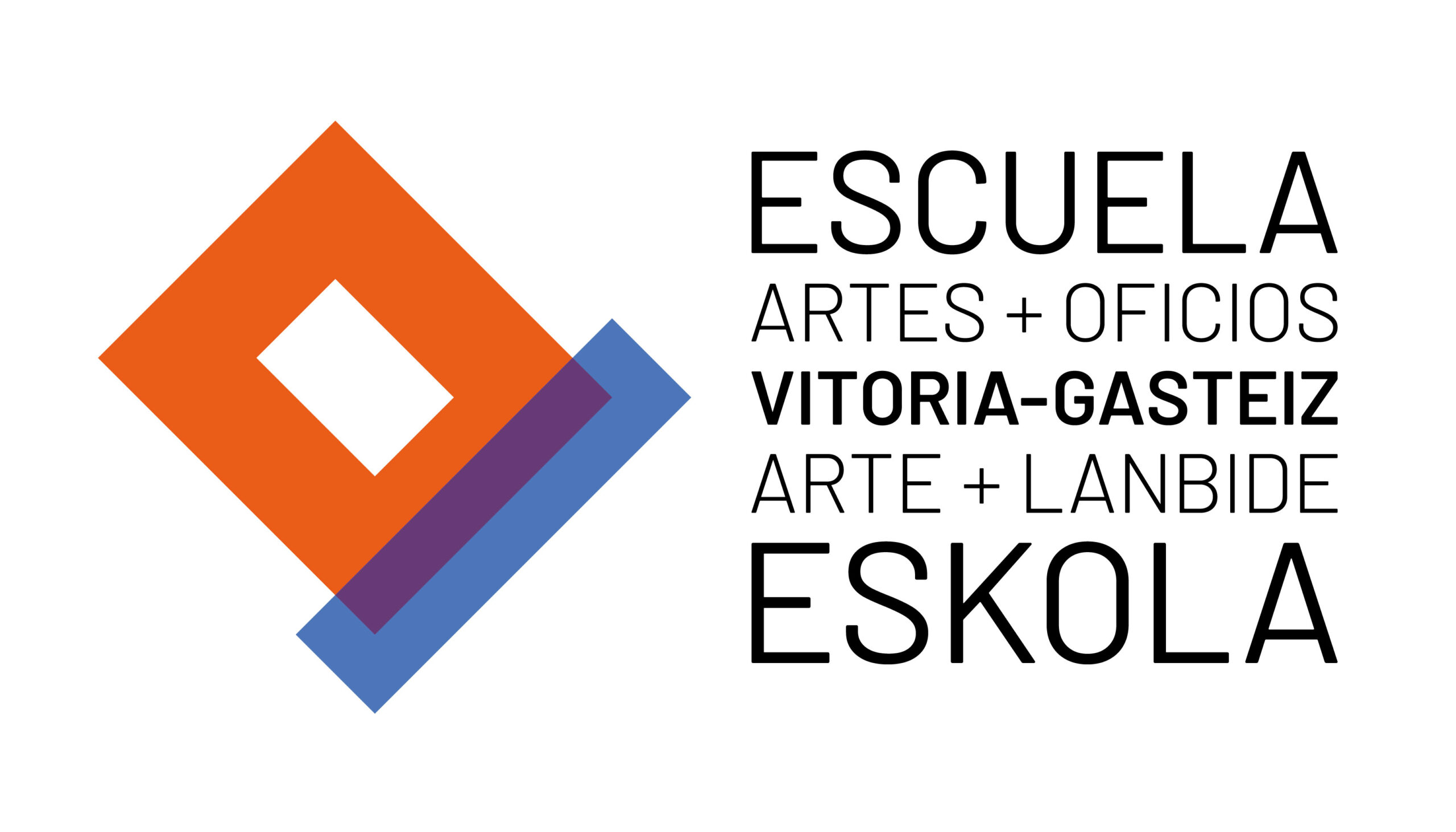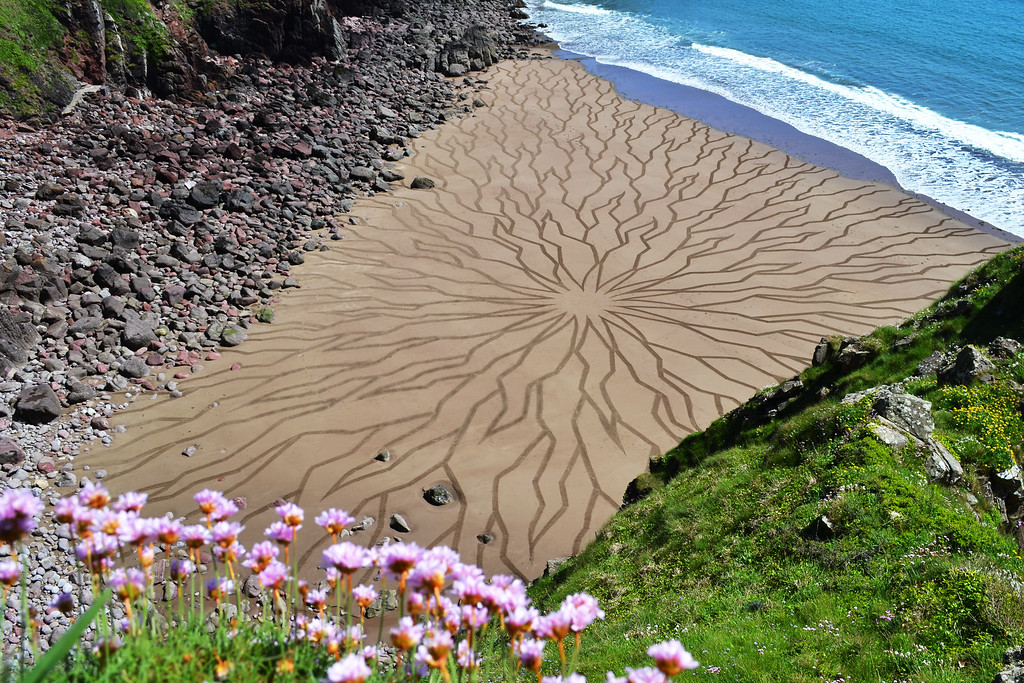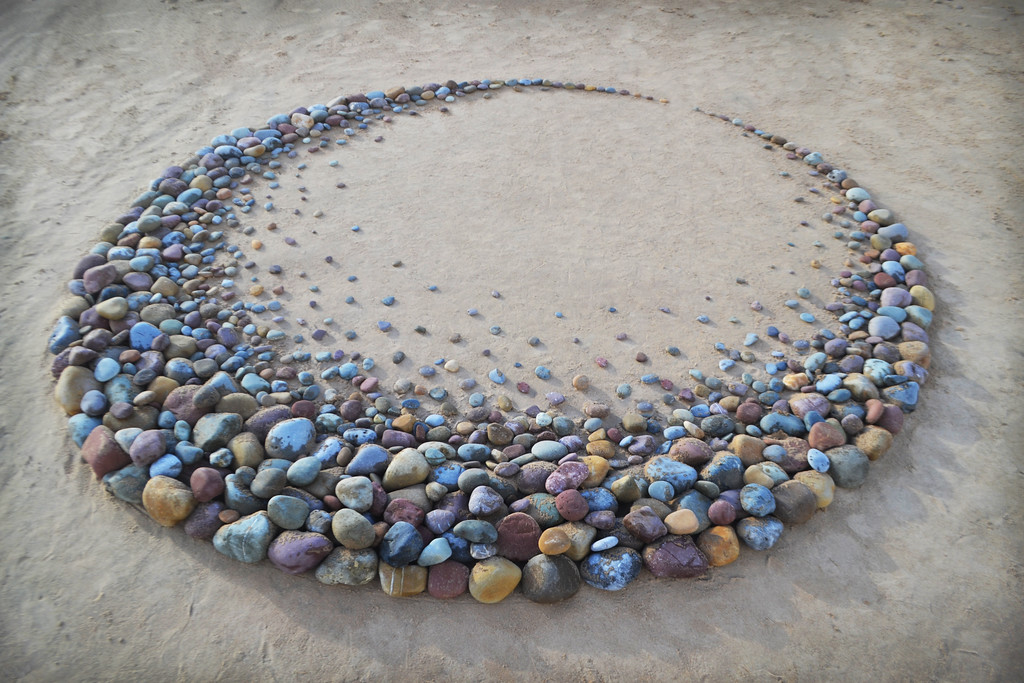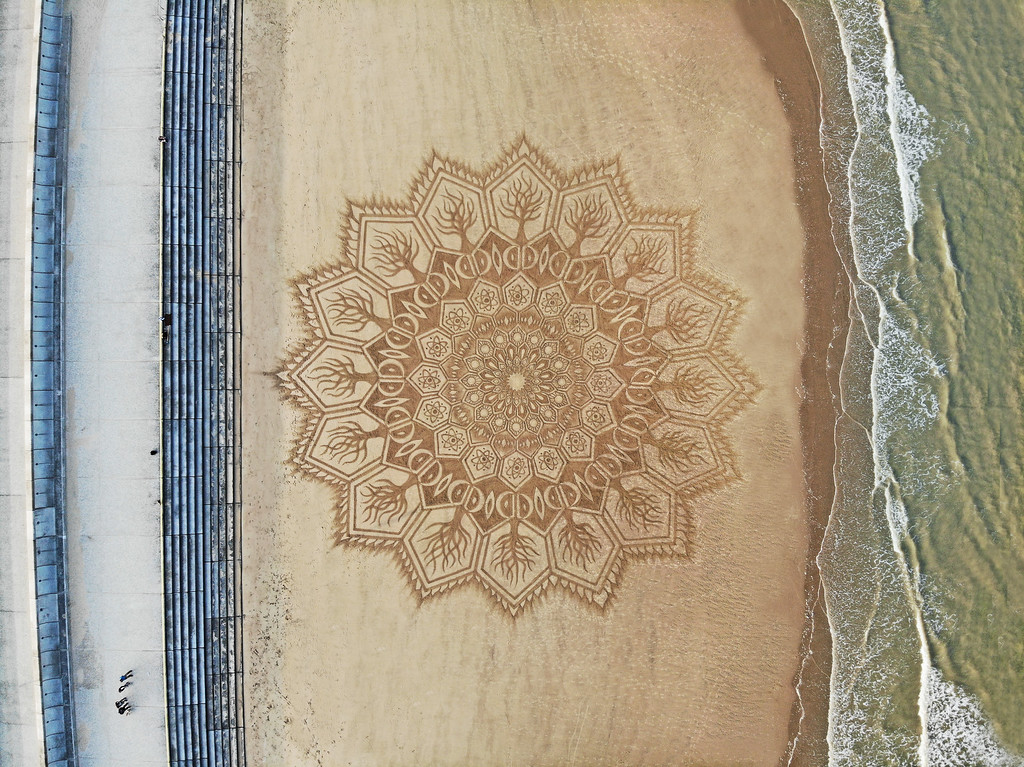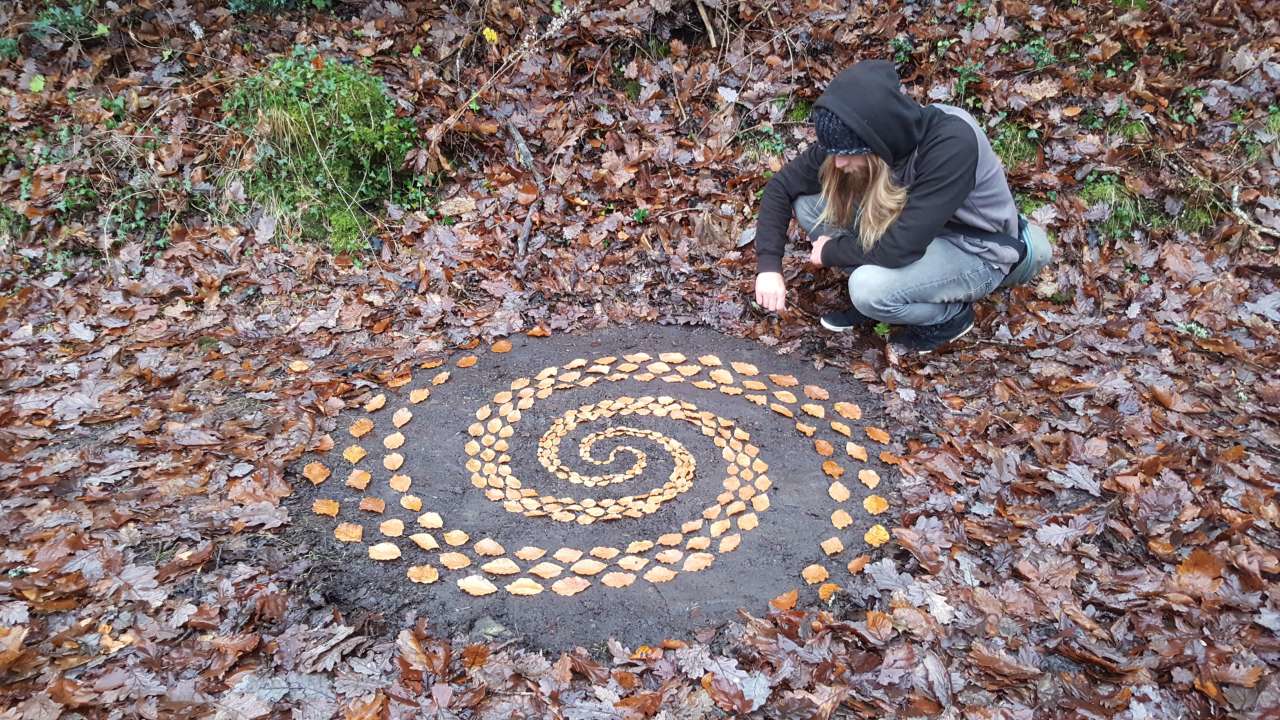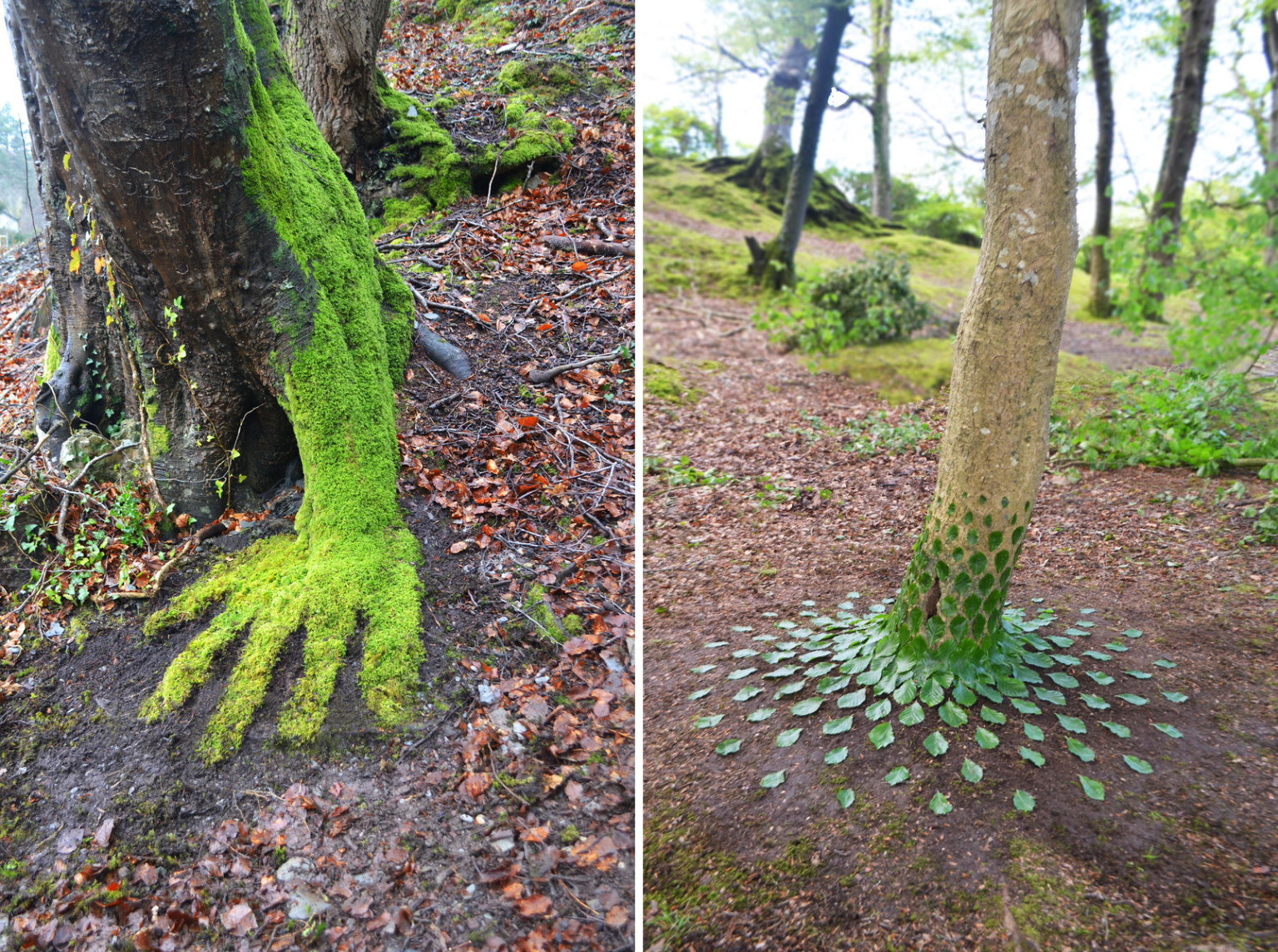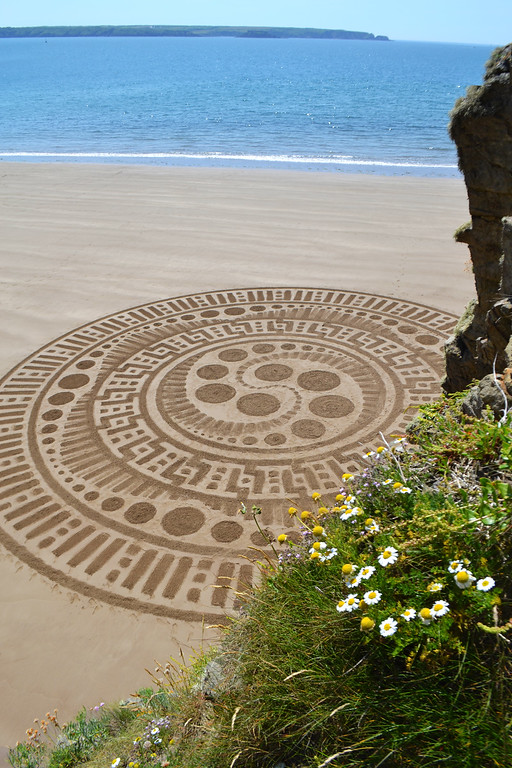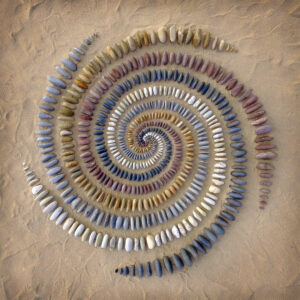
Most of the time art has depicted nature on its canvases (still lifes, portraits, landscapes... ) But sometimes art becomes part of nature itself, the "canvas" is nature itself and interacts with it in a reflexive way. Jon Foreman organizes his spirals of seashells or stones knowing that the tide will wash them all away or that passers-by will step on them. It is the artist's ephemeral "land art," hypnotic and mesmerizing in its precision, arranged in perfectly concentric circles and exacting compositions combed into the sand. His large-scale pieces transform beaches and expanses of woodland into works of art that become unusual focal points for the viewer.
Based in Wales, the artist began creating his nature-based work while in college. Since then, his earth art has ranged from minimal stone sculptures to sand mandalas, and each project has its own fascinating motif. "Repeated processes are always very therapeutic and this is a good example of that, getting lost in the process is an important part of land art," Foreman recently wrote on Instagram.
Foreman lives in Pembrokeshire, Wales, where he is never far from the coast. "The beaches here are truly exceptional," he explains, "and there are so many that I doubt I've visited even half of them." When he arrives at the beach, his plan is to spend four hours (on average) building the artwork. Often, he has only a partial idea of what the finished piece will look like. "Sometimes I have an idea of what I'd like to do, but I very rarely plan it out completely. I like not knowing exactly what the result will be until it's in front of me." While the idea of working without a plan might intimidate many, Foreman finds refuge in the unknown. By having no preconceived notions of what he will create, he is more likely to experiment and develop new facets of his work.
In tinkering with stones, Foreman has discovered some unexpected qualities. He has noticed that rock, despite its solidity, changes when grouped; it becomes "malleable," Foreman reveals. "There are so many ways to work with stone: the color, the size, the shape, the angle at which it is placed, the direction in which it is oriented; the possibilities are endless. Although stone is not the only material I use, it is currently my favorite, as it lends itself to so many different opportunities."
Land art is ephemeral by nature, and will eventually be reclaimed by the land from which it came. "It often becomes a race as the waves roll in," Foreman says. "I try to stay to watch the work erase and capture the moment of impact." It could be a sad moment, but Foreman chooses to see the short life of his work as beautiful.
